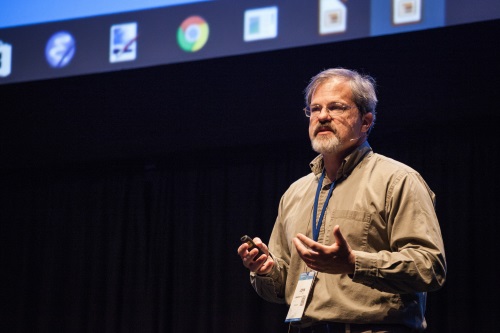“Nearly everything is really interesting if you go into it deeply enough.” — Richard Feynman
If you thumb through Guy Steele’s book Common Lisp: The Language, 2nd Edition, you might be surprised how much space is devoted to defining familiar functions: square root, log, arcsine, etc. He gives some history of how these functions were first defined in Lisp and then refined by the ANSI (X3JI3) standardization committee in 1989.
There are three sources of complexity:
- Complex number arguments
- Multi-valued functions
- +0 and -0
Complex arguments
The functions under discussion are defined for either real or complex inputs. This does not complicate things much in itself. Defining some functions for complex arguments, such as the exp function, is simple. The complication comes from the interaction of complex arguments with multi-valued functions and floating point representations of zero.
Multi-valued functions
The tricky functions to define are inverse functions, functions where we have to make a choice of range.
Real multi-valued functions
Let’s restrict our attention to real numbers for a moment. How do you define the square root of a positive number x? There are two solutions to the equation y2 = x, and √x is defined to be the positive solution.
What about the arcsine of x? This is the number whose sine is x. Except there is no “the” number. There are infinitely many numbers whose sine is x, so we have to make a choice. It seems natural to chose values in an interval symmetric about 0, so we take arcsine of x to be the number between -π/2 and π/2 whose sine is x.
Now what about arctangent? As with arcsine, we have to make a choice because for any x there are infinitely many numbers y whose tangent is x. Again it’s convenient to define the range to be in an interval symmetric about zero, so we define the arctangent of x to be the number y between -π/2 and π/2 whose tangent is x. But now we have a subtle complication with tangent we didn’t have with sine because tangent is unbounded. How do we want to define the tangent of a vertical angle? Should we call it ∞ or -∞? What do we want to return if someone asks for the arctangent of ±∞? Should we return π/2 or -π/2?
Complex multi-valued functions
The discussion shows there are some minor complications in defining inverse functions on the real line. Things get more complicated when working in the complex plane. To take the square root example, it’s easy to say we’re going to define square root so that the square root of a positive number is another positive number. Fine. But which solution to z2 = w should we take to be the square root of a complex number w, such as 2 + 3i or -5 + 17i?
Or consider logarithms. For positive numbers x there is only one real number y such at exp(y) = x. But what if we take a negative value of x such as -1? There’s no real number whose exponential is -1, but there is a complex number. In fact, there are infinitely many complex numbers whose exponential is -1. Which one should we choose?
Floating point representations of zero
A little known feature of floating point arithmetic (specified by the IEEE 754 standard) is that there are two kinds of zero: +0 and -0. This sounds bizarre at first, but there are good reasons for this, which I explain here. But defining functions to work properly with two kinds of zero takes a lot of work. This was the main reason the ANSI Common Lisp committee had to revise their definitions of several transcendental functions. If a function has a branch cut discontinuity along the real axis, for example, you want your definition to be continuous as you approach x + 0i from above and as you approach x -0i from below.
The Common Lisp solution
I’ll cut to the chase and present the solution the X3J13 came up with. For a discussion of the changes this required and the detailed justifications, see Guy Steele’s book.
The first step is to carefully define the two-argument arctangent function (atan y x) for all 16 combinations of y and x being positive, negative, +0, or -0. Then other functions are defined as follows.
- Define
phase in terms of atan.
- Define complex
abs in terms of real sqrt.
- Define complex
log in terms of phase, complex abs, and real log.
- Define complex
sqrt in terms of complex log.
- Define everything else in terms of the functions above.
The actual implementations may not follow this sequence, but they have to produce results consistent with this sequence.
The phase of z is defined as the arctangent with arguments the imaginary and real parts of z.
The complex log of z is defined as log |z| + i phase(z).
Square root of z is defined as exp( log(z) / 2 ).
The inverses of circular and hyperbolic functions are defined as follows.

Note that there are many ways to define these functions that seem to be equivalent, and are equivalent in some region. Getting the branch cuts right is what makes this complicated.


